This project is part of the “Whenua Haumanu” programme, funded by the Ministry for Primary Industries (MPI). “Whenua Haumanu” is a partnership between Massey University and MPI through the Sustainable Food and Fibre Futures (SFFF) fund. Programme delivery partners include Lincoln University, AgResearch, Manaaki Whenua – Landcare Research and the Riddet Institute. Postgraduate students acknowledge support from the T.R. Ellett Agricultural Research Trust and the Fertiliser Association of New Zealand.
Experimental | Researchers | Postgrads | Outputs | Downloads
Introduction
Researchers are invited to join in this newly established dryland farmlet experiment. It will compare liveweight gain of sheep across four pasture based systems (Conventional and Regenerative at two soil fertility levels) over a six year period. Dry matter intake, pasture growth, botanical composition, feed quality, soil fertility, and soil moisture measurements will be used to explain any differences in animal performance over time. Additional measurements by interested parties are welcome.
Intensive animal and forage production measurements started in February 2022. Animal measurements include: liveweight gain/ha, ewe efficiency (kg lamb weaned/kg ewe mated), lambing (% lambs tailed), feed conversion efficiency (kg DM/kg liveweight gain).
RADE pasture types are:
- Conventional dryland = lucerne monocultures and sub clover/cocksfoot mixes
- Regenerative dryland = 12 spp multi-species pasture mixes

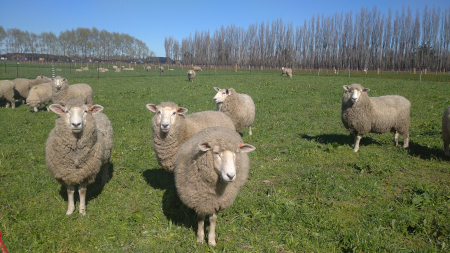
RADE soil treatments:
- Low fertility (Olsen P ~10 mg/L)
- High fertility (Olsen P ~20 mg/L)
Thus, RADE has four self-contained farmlets each covering an area of ~2 ha.
Supplementary feed crops will be grown to deal with expected periods of feed deficit in winter (low temperature e.g. brassica crops; annual ryegrass) and summer (water stress: brassicas, green feed cereals and grass-based pasture). Provision has been made to conserve feed (hay/balage) as required.

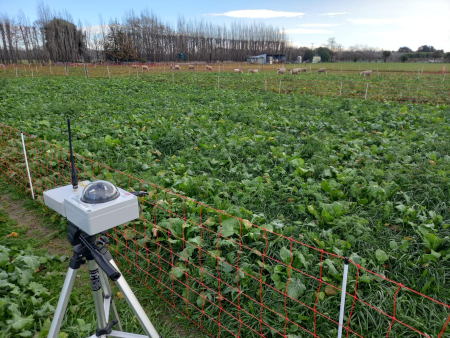


The Conventional farmlet will be managed with set stocking at lambing on the sub clover/cockfoot based pastures, followed by rotational grazing (3-7 days per paddock) of lucerne for spring/summer feed. The cocksfoot-based pastures will then provide the summer dry maintenance feed.
The Regenerative farmlets will be set stocked for lambing but pastures will then be grazed at high intensity and frequency, with 2-3 day shifts.
Protocols for animal, plant, soil and management decisions are being developed in consultation with our RADE technical advisory group.
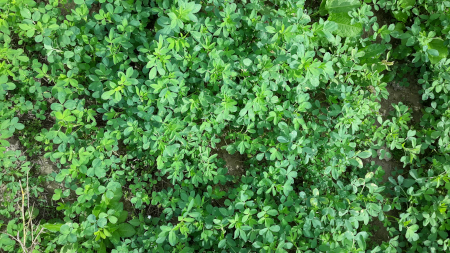
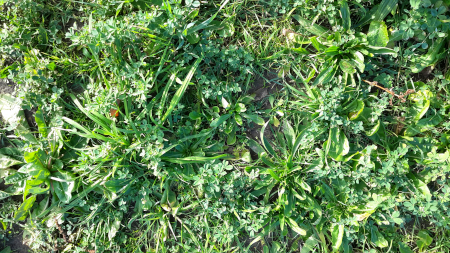
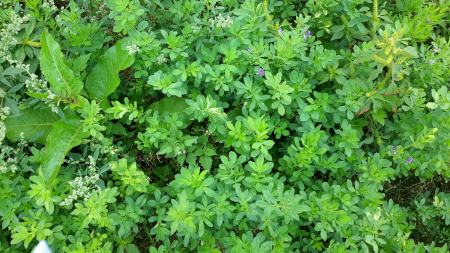
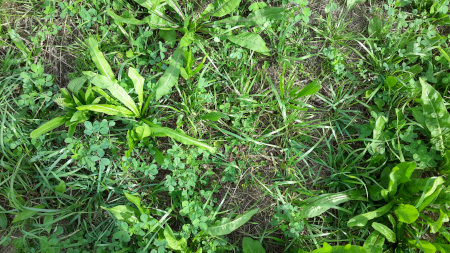
Experimental design
The design is a 22 factorial of the two pasture based systems (Conventional and Regenerative) and the two soil fertility levels (Low and High), arranged in five randomised 42 Latin squares to capture random effects of soil depth and other variables across the site. The 20 plots of the same treatment across squares form a 2 ha farmlet. Each individual plot is fenced, fitted with a water trough, and joined by lanes to a central sheep yard.
Establishment
Forage and soil fertility treatments have been established. Conventional (lucerne monocultures) and Regenerative (12 spp lucerne-based multi-species mix) pastures at two fertility levels were established on 10-13 December 2021. Winter feed crops (annual ryegrass and rape for the Conventional pasture system and a Regenerative 8 spp multi-species winter forage mix), replicated at two fertility levels, were sown on 3-4 March 2022. The sub clover/cocksfoot vs.12 spp grass-based multi-species pastures at two fertility levels were established on 7-8 March 2022. Experimental details will be updated here as plots are established.
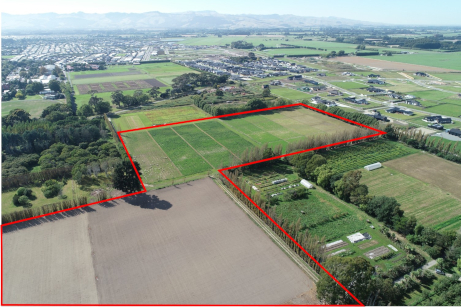
Researchers
- Professor Derrick Moot, Head of Dryland Pastures Research
- Dr Alistair Black, Senior Lecturer
- Professor Jim Moir, Professor, Department of Soil & Physical Sciences
- Malcolm Smith, Research Technician
- Erin Cheng, Research Technician
- Jason Nolan, Research Technician
- Dr Annamaria Mills, Senior Research Officer
- Dr Sonya Olykan, Research Officer
Collaborators
- Dr Sally Price, SJP Research
- Professor Alison Bailey, Department of Land Management and Systems, Lincoln University
- Dr Sharon Lucock, Senior Lecturer, Department of Agribusiness and Markets, Lincoln University
- Dr Helen De Klerk, Lecturer, School of Landscape Architecture, Lincoln University
- Dr Charlotte Alster, Senior Lecturer, Department of Soil and Physical Sciences, Lincoln University
- Dr Naomi Wells, Department of Soil and Physical Sciences, Lincoln University
- Dr Chamindu Deepagoda, Senior Lecturer, Department of Soil and Physical Sciences, Lincoln University
- Bruce Main, Research Technician, Department of Soil and Physical Sciences, Lincoln University
- Dr David Whitehead, Principal Researcher, Manaaki Whenua – Landcare Research
- Dr Sam McNally, Senior Researcher, Manaaki Whenua – Landcare Research
Postgraduate Students
- Lauren Jones (PhD – in progress)
- Kaitlin Watson (PhD – in progress)
- Luke Robb (PhD – in progress)
- Obaka Ikani (PhD – in progress)
- Mira Dolleschka (Masters – in progress)
- Katie Bennett (2025 B.Ag.Sci (Hons))
- Hannah Ferguson (2025 B.Ag.Sci (Hons))
- Zane Coates (2025 B.Ag.Sci (Hons))
- Sam Mills (2025 M.Ag.Sci)
- Breanna Holt (2024 B.Ag.Sci (Hons))
- Anja Wellwood (2024 B.Ag.Sci (Hons))
- Anna Woods (2024 B.Ag.Sci (Hons))
- Hannah Ballingall (2024 B.Ag.Sci (Hons))
- Svetlana Gileva (2024 M.App.Comp)
- Sammi Yan (2024 M.App.Comp)
- Lily Liying (2024 M.App.Comp)
- Kassi Yan (2024 M.App.Comp)
- Lily Dixon (2023 B.Ag.Sci (Hons))
- Lara Noelte (2023 B.Ag.Sci (Hons))
- Jordan Shrimpton (2023 B.Ag.Sci (Hons))
- Charlie Young (2022 B.Ag.Sci (Hons))
Outputs
Journal articles/conference posters
- Jones L, Mills A, Black AD, Moot DJ. 2025. Lucerne (Medicago sativa L.) yields were unaffected by phosphorus fertility level under grazing in a dryland farmlet experiment. Journal of New Zealand Grasslands 87: 285-292.
- Robb L, Black AD, Mills A, Moot DJ. 2025. Sheep liveweight and dry matter production from Year 3 of the Regenerative Agriculture Dryland Experiment. Journal of New Zealand Grasslands 87: 161-173.
- Watson KJ, Moir JL, Moot DJ, Black AD. 2024. Regenerative management effects on pasture production: initial data from a dryland farmlet experiment. Journal of New Zealand Grasslands 86: 109-118.
- Watson KJ, Moir JL, Black AD. 2024. Impacts of regenerative agriculture on grassland production: a new farmlet-scale experiment at Lincoln University, New Zealand. Centennial Celebration and Congress of the International Union of Soil Sciences, May 19-21, 2024, Florence, Italy. ID ABS WEB: 136767.
Thesis and Dissertations
2025
- Bennett,, K.E. 2025. Dry matter yield and resource acquisiton of regenerative compared with lucerne dryland pastures. B.Ag.Sci (Hons) dissertation, Lincoln University. 99 p.
- Ferguson, H.C.H. 2025. Regenerative pasture and grazing practices for dryland sheep production: new data for Latin Square 3 of the Regenerative Agriculture Dryland Experiment (RADE). B.Ag.Sci (Hons) dissertation, Lincoln University. 126 p.
- Coates, Z. 2025. Water use efficiency and water extraction patterns of conventional and regenerative pastures grown in a Templeton silt loam soil. B.Ag.Sci (Hons) dissertation, Lincoln University. 62 p.
- Mills, S. 2025. Microbial responses to regenerative and conventional farming practices in dryland pasture systems. M.Ag.Sci thesis, Lincoln University. 89 p.
- Wellwood, A.R.C. 2024. Comparison of soil labile phosphorus extraction methods on dryland soils under conventional and regenerative management practices. B.Ag.Sci (Hons) dissertation, Lincoln University. 54 p.
2024
- Ballingall, H. 2024. Inter-plot variation of soil extracellular enzymes between conventional and regenerative agricultural practices. B.Ag.Sci (Hons) dissertation, Lincoln University. 49 p.
- Holt, B.M. 2024. Coopworth hogget and lamb liveweight gain on regenerative and conventional dryland pastures. B.Ag.Sci (Hons) dissertation, Lincoln University. 78 p.
- Woods, A. 2024. Dry matter accumulation of regenerative and conventional dryland forage crops sown in a dry autumn. B.Ag.Sci (Hons) dissertation, Lincoln University. 87 p.
2023
- Dixon L.G.B. 2023. Seedling recruitment in autumn from regenerative and conventional dryland pastures. B.Ag.Sci.(Hons) dissertation, Lincoln University, Christchurch, New Zealand. 71 p.
- Noelte, L.A. 2023. Impact of regenerative agriculture on radiation use efficiency of grassland production. B.Ag.Sci (Hons) dissertation, Lincoln University. 58 p.
- Shrimpton, J.N. 2023. Can regenerative agriculture increase the water use efficiency of grassland production? B.Ag.Sci (Hons) dissertation, Lincoln University. 64 p.
2022
- Young, C.M. 2022. Forage yield responses to regenerative agriculture: Establishment of a farmlet-scale field experiment at Lincoln University. B.Ag.Sci (Hons) dissertation, Lincoln University. 82 p.
Project and Student Reports
2025
- Gerritsen S, McCready J, Stuart A, Thomson E. 2025. Effects of regenerative practices at high and low soil fertility on pasture production and quality. Report for PLSC321. 24 p.
- Johnson F, Mayall R, Dodson I, Willemse K. 2025. Cool season dry matter yield of regenerative pastures compared with lucerne dryland pastures at high and low Olsen P fertility. Report for PLSC321. 30 p.
- Mason, P. 2025. Mapping pasture species composition. ENGN 699 Report, Lincoln University. 10 p.
- Rawlings G, Turnbull L, Thomas M, Kinney S. 2025 Regenerative Agriculture Dryland Experiment – Latin Square 2. Report for PLSC321. 25 p.
- Reid J, Skinner S, Shortus L, Wolfhagen T. 2025. Pasture yield and botanical composition of regenerative and conventional pastures grown in Block 3 of the RADE. Report for PLSC321. 23 p.
- Richards E, Mackenzie K, Jephson C, Deighton D. 2025Comparison of pasture utilisation, recovery, and grazing patterns in diverse species and sub-clover/cocksfoot under varying soil fertility in dryland systems. Report for PLSC321. 17 p.
- Spark G, Wasley K, Lynch A, Christensen A. 2025. Effect of Phosphorous fertilizer and pasture composition on grazing intake. Report for PLSC321. 39 p.
2024
- Burrows S, Cammell J, Oliver C. 2024. Evaluating pasture production and utilization of a species-diverse, regenerative, and conventional lucerne monoculture across high and low soil fertility over a three-month period. Report for PLSC321. 17 p.
- Daly E, Dickson S, Hunter L, Urlich J. 2024. Dry matter production and apparent livestock intake comparison between regenerative and conventional pasture management practices under high and low soil fertilities. Report for PLSC321. 28 p.
- Gileva, S. 2024. Diverse pastures mapping. COMP 693 Industry Project, Lincoln University. 32 p
- Kelly H, Harris M, Hunsel H, Williams J. 2024. Winter forage crop production under regenerative and conventional management approaches on dryland. Report for PLSC321. 21 p.
- Liling, L. 2024. Utilize remote sensing technology and AI model to identify species in pasture. COMP 693 Industry Project, Lincoln University. 22 p.
- Paltridge J, Morgan L, Meikle J, Malone H. 2024. Pasture production and utilization under regenerative and conventional management in high and low levels of phosphorus. Report for PLSC321. 22 p.
- Parker A, McFetridge C, Parata N, Dunbar P. 2024. Pasture production and utilisation under regenerative and Conventional management. Block 3 of dryland farmlet experiment; Comparison of diverse (12 species) pastures with cocksfoot/sub-clover pastures under high and low soil fertility. Report for PLSC321. 16 p.
- Perriam M, Ferguson S, Higginbottom G, Casey E. 2024. Pasture production and utilisation under regenerative and conventional management: Block 1 of the regenerative agriculture dryland farmlet experiment (RADE). Report for PLSC321. 26 p.
- Yan, G. 2024. Using Geographic Information System (GIS) and Remote Sensing (RS) to analyze pasture biomass based on the Lincoln University RADE Project. COMP 693 Industry Project, Lincoln University. 27 p.
- Yan, S. 2024. Diverse pasture species identification study by using ArcGIS and remote sensing equipment. COMP 693 Industry Project, Lincoln University. 28 p.
Downloads
| 19/12/2023. RADE Researcher field day handout. 5 p. (PDF 0.5 MB). |  |
| 10/12/2024. RADE public field day handout. 24 p. (PDF 1.4 MB). |  |
| 11/12/2025. RADE public field day handout. 33 p. (PDF 2.0 MB). |  |
